Almost two weeks ago, I passed up the opportunity to call in a large buck that had been freshly-hit along US 41. At the time, I was rather frustrated with myself for not picking it up, but I also realized that there was no way I could handle processing such a large, heavy animal. There would be other deer, I told myself, and sure enough, today proved as much.
This morning, Steph and I decided we'd take a drive down US 41 in search of hit deer. It being Black Friday, the highway would have had a higher traffic volume earlier — people seeking deals in town, perhaps driving great distances to get to those stores. Between shoppers and folks headed home after Thanksgiving dinner, the chances for a deer-car collision were higher than usual, and I thought it would be a good time to go scavenging.
We didn't have to drive far: only a quarter-mile in, I spotted a small deer on the side of the road. Steph and I exchanged a glance: well, that was fast.
The hoarfrost along the highway was brilliant. It coated the tree branches and bushes and the dead vegetation poking above the snow; the sun was shining and it made everything sparkle. The first thing I noticed about the deer was that her whiskers were encrusted in that same hoarfrost, glittering brilliantly.
A small, yearling doe, she'd been hit overnight. I decided immediately that I would call the police and ask for a tag.
Visible in the snow were the doe's last tracks before she was struck:
It was a bit of a wait. First one state police officer arrived; he was young and very friendly, and we chatted a bit while waiting for his partner to show up with the tags. I told him that I'd eaten venison for the first time in 15 years the night before, for Thanksgiving (the meat was a gift from a co-worker); he seemed impressed that I intended to clean and butcher the deer myself. As we waited, two different men pulled over, both hoping that I had hit the deer and didn't want it. "They're like vultures," said the state trooper.
Complicating the matter further, it was discovered that the deer was shot, in or near the head. There was no record of this happening, so the policemen had to notify the conservation office. The collision had broken the doe's front leg (as well as the driver's headlight); even if it wasn't initially reported, I'm glad the driver took the initiative to put the deer out of her misery.
Finally, after signing some papers, we loaded the doe into the back of the Subaru. Then the real fun began.
After dragging the doe into the backyard, I began cutting her open. Out popped her stomach and intestines, and then I asked myself what on earth do I do next? I called up our neighbor Clyde from down the street; a few days prior, he'd picked up a roadkill doe of his own (weighing in at 140 pounds!), and I asked him if he could give me a hand. Together we set up a pulley on one of our trees, and hoisted up the doe. Clyde then told me what to do next, and under his directions, I was able to complete the gutting process.
It was a lot like the dream I described in my previous post. I was elbow-deep in the deer's body, cutting away the diaphragm, working my fingers past the warm slickness of her heart and lungs, and then — pulling. The organs slopped out into a pile, glistening and colorful. I thanked Clyde for his help, then took more photographs.
The tag, I was told, was to be kept on the body until the butchering process.
Next came the skinning process. It was incredibly easy, and I'm not sure I've ever skinned an animal so quickly.
Without her thick winter coat, the doe suddenly appeared much tinier. While skinning her, I discovered that she had been shot not in the head, but in the neck, the crumpled bullet still lodged in her muscle.
Tomorrow I will embark upon the task of butchering the doe. Because she was so young when she died, and because the collision only damaged her front leg, her meat should be very good. I went to the local grocery store to pick up some freezer bags and freezer paper; upon greeting the cashier, he said with a smile, "Someone shot a deer." I told him that I'd actually picked it up off the side of the road, to which he replied, "Ah, I've cooked many a roadkill deer."
This afternoon, after the doe had been gutted and skinned, I happened to glance out our front window — just in time to see two deer bound across the road, their white tails flagging as they jumped. They were gone within seconds.



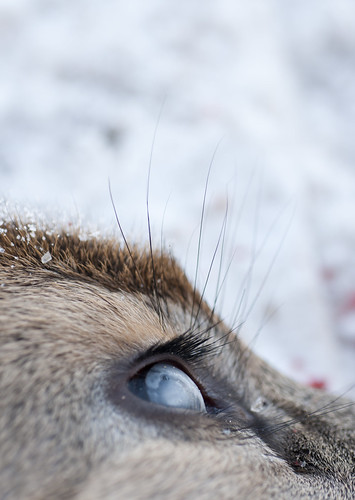
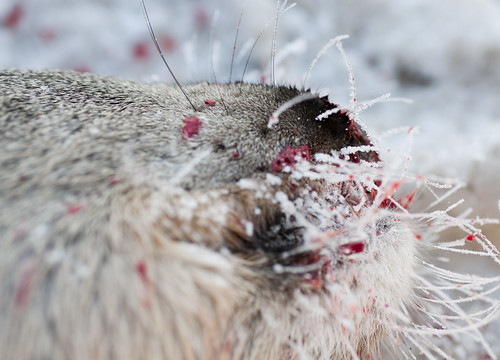

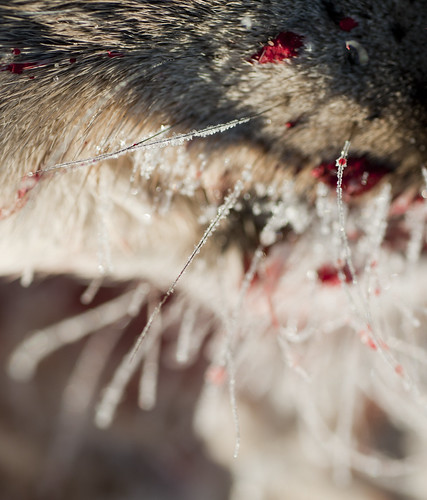
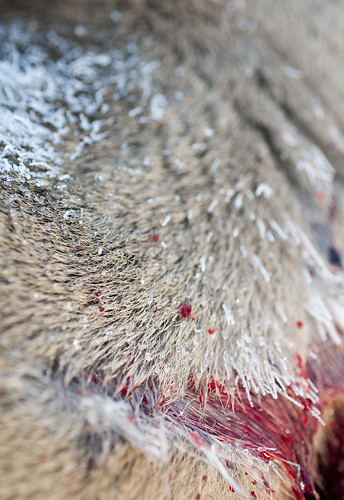
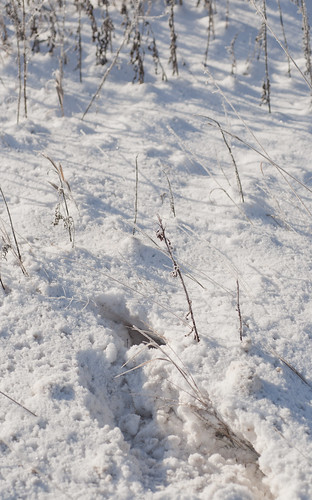
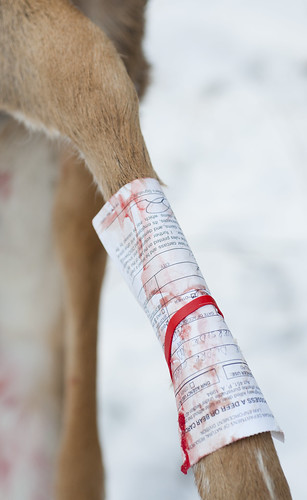
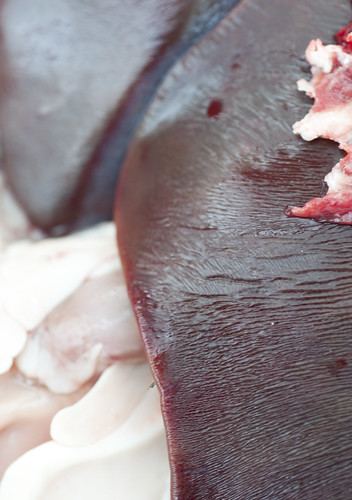
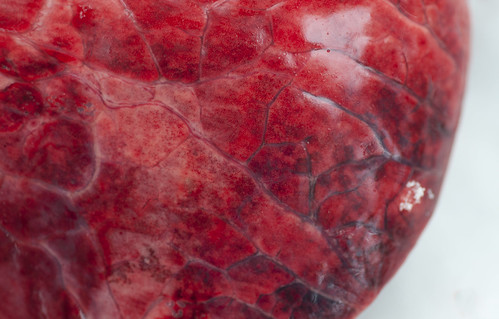
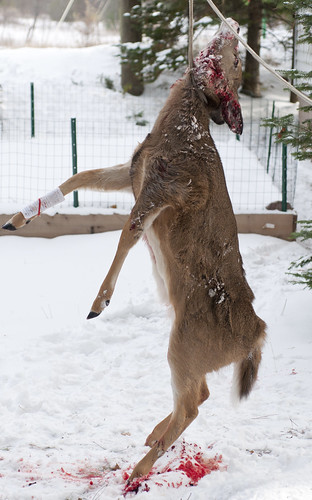
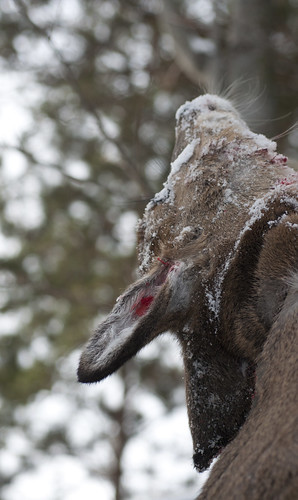
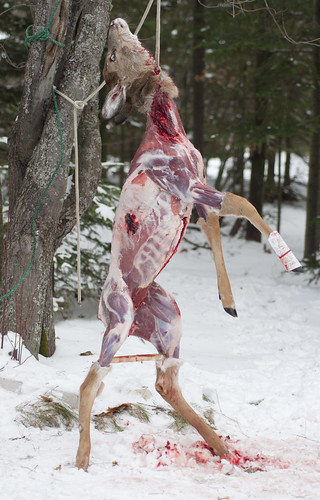
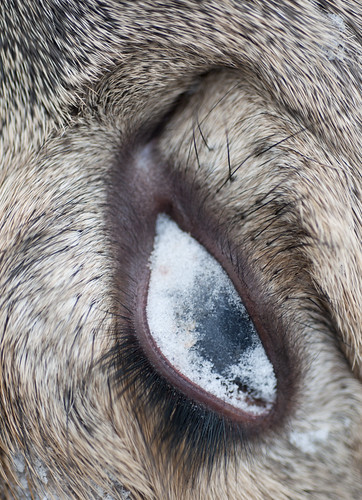
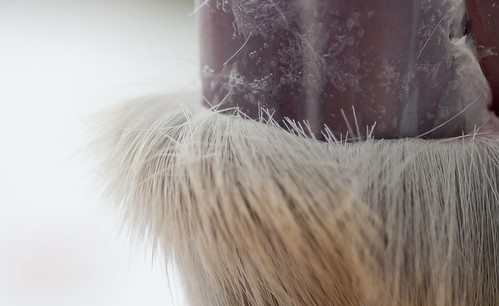
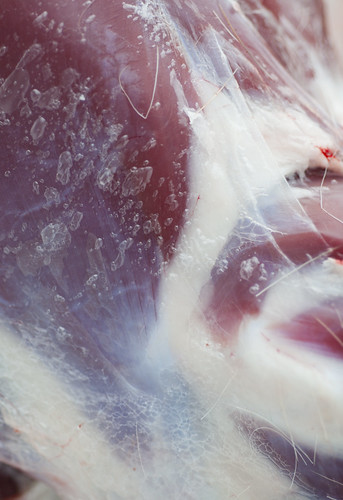

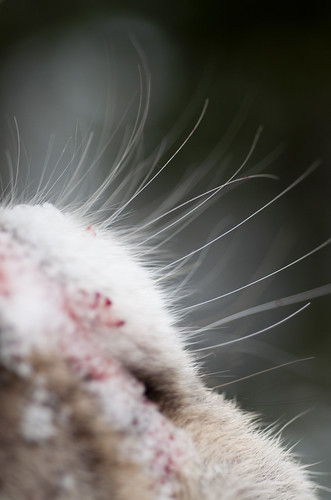



I love the close up shots of organs and muscle. I look forward to seeing the rest of the process!
ReplyDeleteIs permitting to collect roadkill the rule in your state? Any good resources for rules and regs on roadkill in other US states?
Thanks!
DeleteIn the state of Michigan, roadkill laws are pretty strict. For deer and bears, you must be issued a tag to collect the carcass — in other words, you must call the police or DNR, and they will give you a (free) permit at the scene.
For other animals (fox and gray squirrels, raccoons, foxes, coyotes, anything else considered "small game"), you must possess a small game hunting license AND the animal you intend on collecting must be in-season.
For animals considered "vermin" — opossums, skunks, porcupines, red squirrels, weasels, and so forth — I don't believe you need a hunting license or permit, as these animals are allowed to be killed any time of year. (But don't take my word for it!)
Since these laws vary greatly from state to state (some states don't allow for collection of roadkill at all), it's best to check with your state's DNR to see what laws you must follow.
Oh gosh, I feel like puking on my keyboard right now. I'm vegan actually and scenes like this spin my head. You did a great work there by the way. :)
ReplyDeleteRegards,
Arnold Brame
Thanks! I was vegan for about four years, until my significant other's extensive food allergies forced us to reconsider our eating habits. I still have no intention to eat anything cranked out of a factory farm, but I can hardly pass on something free and fresh from nature.
Delete